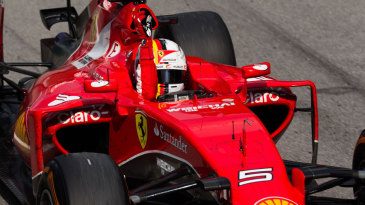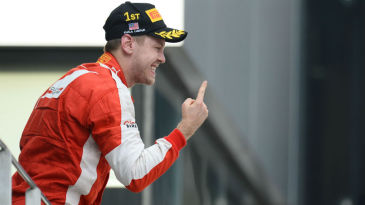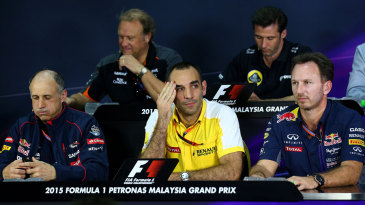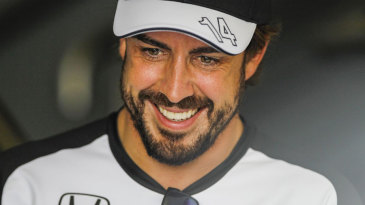- Team founded 1933
- Engine Bristol
- Principal Humphrey Cook, Raymond Mays, and Peter Berthon
| Year | Engine | Driver | Race | Start | Won | Pod | Class | Best | 1+2 | Pole | Front | Best | Lap | Pts | Pos | ||||
|---|---|---|---|---|---|---|---|---|---|---|---|---|---|---|---|---|---|---|---|
| 1950 | ERA | FR Gerard, TC Harrison, L Johnson, A Rolt, P Walker | 3 | 7 | 0 | 0 | 3 | 6 | 0 | 0 | 0 | 10 | 0 | 0 | - | ||||
| 1951 | ERA | FR Gerard, B Shawe-Taylor | 1 | 2 | 0 | 0 | 2 | 8 | 0 | 0 | 0 | 10 | 0 | 0 | - | ||||
| 1952 | Bristol | SC Moss | 3 | 3 | 0 | 0 | 0 | - | 0 | 0 | 0 | 10 | 0 | 0 | - | ||||
| Total | 7 | 12 | 0 | 0 | 5 | 6 | 0 | 0 | 0 | 10 | 0 |
| Race | Circuit | Date | ||
|---|---|---|---|---|
| First race | British Grand Prix | Silverstone | May 13, 1950 | Race results |
| Last race | Dutch Grand Prix | Zandvoort | August 17, 1952 | Race results |
ERA was founded by Humphrey Cook, Raymond Mays, and Peter Berthon in November 1933 and established in Bourne, Lincolnshire, next to Eastgate House, the long-time family home of Raymond Mays. Their ambition was to manufacture and campaign a team of single seater racing cars capable of upholding British prestige in Continental European racing.
With the cost of aspiring to full Grand Prix racing prohibitive, they instead aimed ERA's efforts at the smaller voiturette - 1500cc supercharged - class of motor racing, the Formula 2 equivalent of the day. Humphrey Cook financed the operation - using the not insignificant wealth from the family drapery business, Cook, Son & Co., of St Paul's Churchyard, London. Peter Berthon was responsible for the overall design of the cars, while Raymond Mays became its principal driver - having already successfully raced several other makes including Vauxhall, Bugatti and Riley.
A new chassis was designed by the well known British designer Reid Railton (who had also successuly designed the Bluebird land speed record cars for Malcolm Campbell) and was constructed by Thomson & Taylor at Brooklands. The engine was based on the well proven Riley 6 cylinder unit, albeit this was modified in a number of significant ways. A stronger forged crankshaft with a large centre Hyatt Roller bearing was made and an entirely new aluminium cylinder head designed. The engine was supercharged using a bespoke supercharger designed by Murray Jamieson who had worked with Mays & Berthon on the White Riley. The ERA engine was designed around three capacities - a base 1500cc, an 1100cc and also was capable of being expanded up to 2000 cc. It ran on methanol and in its 1500cc form was capable of producing around 180-200bhp with in excess of 250-275bhp in 2000cc form.
The panel-beating brothers George and Jack Gray hand-fashioned the new car's single-seater bodywork, to a design credited to a Mr Piercy who had previously designed the bodywork for Malcolm Campbell's 'Bluebird' record breaker.
The unveiling of the first ERA - chassis R1A - to the press and public took place at Brooklands on 22 May 1934. After initial chassis handling problems, which required a number of modifications, soon ERA had a winning formula. By the end of the year ERAs had scored notable victories against many more established marques. In 1935, in a major race at theNürburgring, ERAs took first, third, fourth and fifth places. Through the remainder of the decade, with drivers of the calibre of Dick Seaman in the team, ERA dominated voiturette racing.
Two Siamese princes, Chula Chakrabongse and Bira Birabongse, whose trio of ERAs became famous as "Hanuman", "Romulus" and "Remus", ran their own team, operating from The White Mouse Garage. Prince Chula owned the team, having bought Romulus as a present for his cousin, Prince Bira, who was the team's driver. The more modern E-Type ERA appeared just before the Second World War but was not fully developed.
The Second World War brought a halt to motor racing in Europe, and the team's Bourne site was used to produce aircraft components. By the time racing resumed in the late 1940s Berthon and Mays had moved on to the BRM project.
ERA restarted operations in Dunstable under new ownership: Leslie Johnson bought the company, together with one of its three pre-war E-Type single-seaters, in late 1947.
A new 1.5-litre Formula Two car, the G-Type, raced in the 1952 World Championship, which was the first season that had been run to Formula Two rules. The car used a Bristol engine. Stirling Moss drove, but results were disappointing. Moss said: "It was, above all, a project which made an awful lot of fuss about doing very little. By this time I was very disillusioned by the Clever Professor approach to racing car design. I would eventually learn that even the most brilliant concept could fail if the team concerned lacks the manpower and organisation and money to develop the inevitable bugs out of it."
Johnson sold the cars to Bristol--who used them as the basis for an assault on Le Mans which would bring them several class wins in the mid-1950s--and focused the company on research and development (R&D) engineering. He eventually sold it to Zenith Carburettor Ltd, which was then purchased by Solex, another carburettor firm.
Although renamed Engineering Research and Application Ltd, and still primarily an R&D operation, ERA still did a small amount of race preparation, and in the 1980s put its name to the ERA Mini Turbo, a turbocharged version of the Mini capable of 115 mph (185 km/h).




